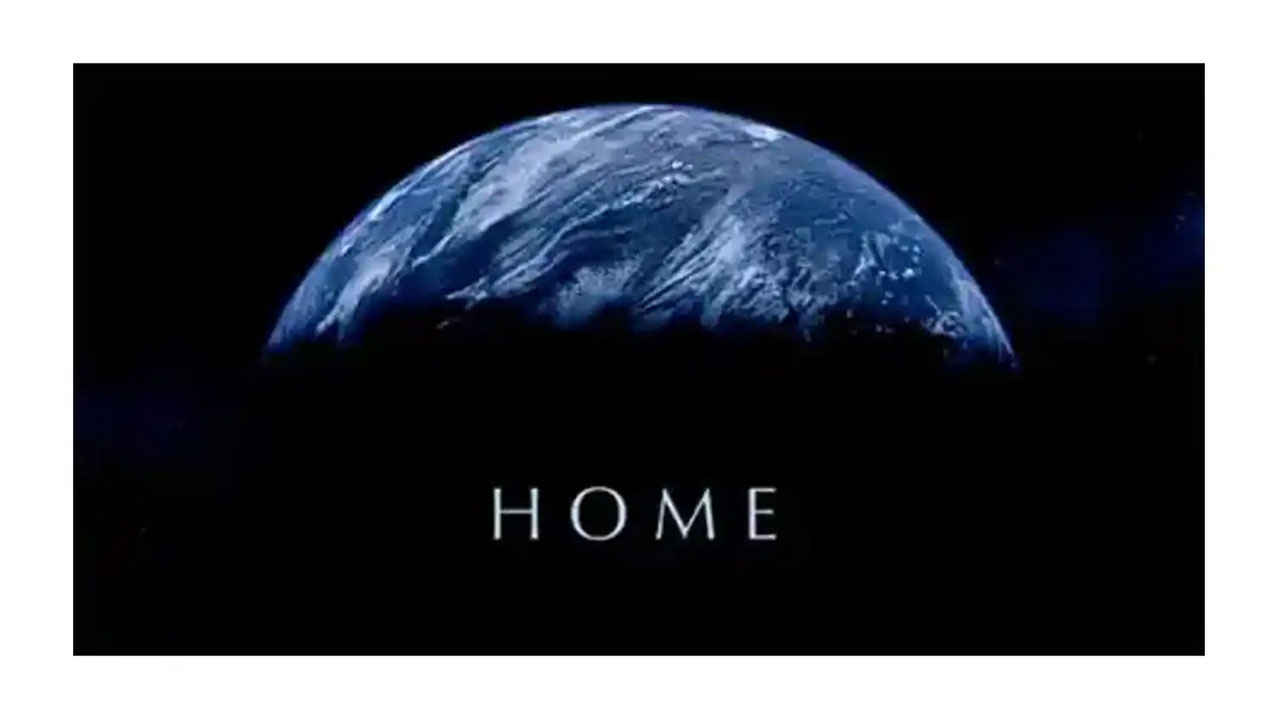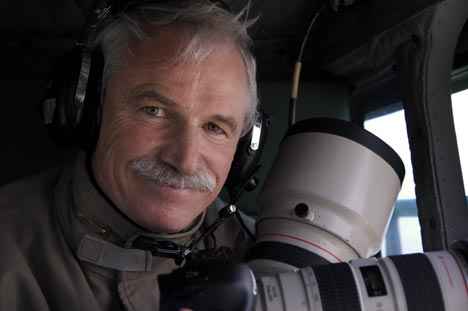Exclusive: Interview with the director and lensman of ‘Home’ and ‘Earth From Above’ : Yann Arthus Bertrand

 Survey
SurveyAnyone who takes a commercial airline experiences to some extent, Earth From Above. You can call it God-Mode, and it feels to a certain extent, like enlightenment. But it’s mostly clouded, and follows fixed routes. At best, you get to see bits of a city, pulsing like a silicon circuit. Yann Arthus Bertrand, on the other hand, has boldly ventured into this field over the last two decades, founding a press agency that has half a million aerial photographs in its bank.
His free exhibition, Earth From Above which debuted in Paris in 2000, has been viewed in over 110 countries, and over 120 million people. With a $12-million budget, he boldly ventured again for the non-profit documentary, Home, which has no copyright. It was released free to air, and free to download on the internet in June this year, and translated in 14 languages. It captures spectacular vistas of Earth – from the primitive to the modern, the beauty and the warts and all, and is about climate change.
The photo exhibit, corroborated with a barrage of stats is now on display at Nariman Point in Mumbai till the 8th. Yann Arthus Bertrand met me at a café in Ambassador Hotel yesterday morning. He had apparently been quizzing each journalist, asking them if they had seen his exhibit. Armed with a microphone and a netbook, your brave Digit correspondent replied truthfully that he hadn’t, but had seen and shared Home, and reviewed it for a local newspaper.
That seemed to warm him up, and over half an hour, he spoke to me about “green-washing”, the internet as the dust bin of media, and the difficulties he faced as a photojournalist in countries around the world.
Some excerpts, as captured by a $50 audio recorder. The reader should also bear in mind that this was a conversation between two non-native English speakers.
How did the Home project start off?
It started after I first saw the Al Gore movie, I showed the movie to the French ensemble, and I decided that I wanted to a similar movie, and I spoke to Luc Besson, who in five minutes he told me, let’s do the movie. I think everyone wants to be involved in some way. However, it can be difficult to promote a non-profit movie. Take today’s screening, for example, I had to pay for it myself! We sold the DVDs at cost price, we have sold 1 million copies at 5 Euros.
Home goes under a Creative Commons license, and has no copyright. Are we free to reproduce the hi-def shots of these pictures as stock photos?
The movie is free to show, but I don’t want anyone to cut it to pieces. If you want to screen it, you have to show the full movie. As far as the photography is concerned, it’s not a commercial issue, I mean, it is okay for students and private people, besides, I am not the owner of these photographs anymore… The world is not my creation.
How were you able to raise the finances for this movie, that too for a non-profit.
I had never done a movie before, but I have to say that I have been working on this for twenty years, so I know where to go, I knew the story that I wanted to do.
On being at TED: I showed them the project, this year I am going to show the movie.
Your work to some extent, can be compared to Edward Burtynsky, you have both captured the horrors of industrial landscapes, from mining operations to cattle farms…
I am in court for that. I am still in legal trouble for my footage of cattle farms in America. But I don’t care, the information is out there. They can’t stop it now. I have a lot of problem with this picture. In India, it is very difficult to fly, the bureaucracy, the security concerns. 50 percent of my movie has been captured. I asked for authorization to see [Rajendra] Pachouri. [He shows me his passport, which says]: FILMING ALLOWED IN DELHI AND KOLKATA ONLY, NOT ALLOWED IN SUNDERBANS.
In Dubai, they captured my camera. I had to send a camera on another name. (Home’s footage of Dubai is terrific btw.) You must tell us what you are going to say. I’m a journalist, I said. They are afraid of what I am going to show.
In Argentina I was filming a dam, and went in jail for a week, in a hotel without my passport.
I’m an activist, and my work is to disturb people sometime. I was forbidden to film the gold mines in New Guinea… in China, Saudi Arabia. In general, you are forbidden to fly, you know? When you fly, you are like a spy. People don’t like aerial photography. All the Bombay shots, they kept it.
As someone who has captured both the past and the future through a lens, are you filled with hope, or fear for the future?
To understand the present, you have to know the past. It is very important to know where we are coming from. If you don’t understand that, you don’t understand the world. Life is a miracle, and I’m trying to explain that in a movie. It is very fragile. People don’t understand that the climate is very subtle and fragile, and we are disturbing the balance. The chemical balance. The planet is changing.
There are some people who say that climate change itself is irreversible.
I still want to believe in science. But I don’t want to be a ‘negationist’.
On the psychic effects of apocalypse culture on a society, and global warming as a religious experience for the agnostic.
The media are conveying a message which is very stressful, people are getting used to it. It doesn’t have the same impact as before, and people go to sleep as before, people get bored. The media gets them desensitized. I believe that scientists and politicians can find a way out. They can only find a smaller part of the solution, but the solution should come from the people. We need some Gandhi, Mandela, with a vision. Democracy doesn’t bring such people out anymore.
On recycling and eco-friendly movements:
In Europe and America, there is lot of green washing, but nothing is green! In San Francisco, they have some solar panels, but still a lot of four wheel drives, we live in a fridge now. Everywhere you go you now have air conditioning. Everybody is using an air conditioner… Remember the propeller?
The Internet as a hive for ideas, and how it is raising our collective intelligence and consciousness:
The internet can be amazing. But everybody can say anything. It’s the dustbin of the media. One guy, he says to me, “I don’t believe in climate change, I read that 50% of the IPC people have quit”, and I ask him where have you read that? And he says I read it on the internet.
The internet is not the truth! I saw so many bad things on the internet about global warming, about my site. I believe it can be the best and the worst.
Any documentaries that you would like to recommend…
After pausing and sighing deeply, he summons The Age of Stupid.
When we showed Home on the French TV, close to 9 million people watched it. We had more people watching it than a football match. People are not idiots at all. If you give them good information, they believe you. Everybody was amazed.
He then holds up a betacam copy of Home, and tells me that an Indian TV channel is going to show it 30 times. The name escapes him, but since there is only one national TV channel, I spell out DD…..Doordarshan. “Yes!” He says, “They are going to show it 30 times, at least that’s what they have told me.”
And to close, some non-profit hyperlinks:
http://www.goodplanet.org/en/
http://www.youtube.com/homeproject
http://www.6billionothers.org/
http://www.home-2009.com/us/index.html

